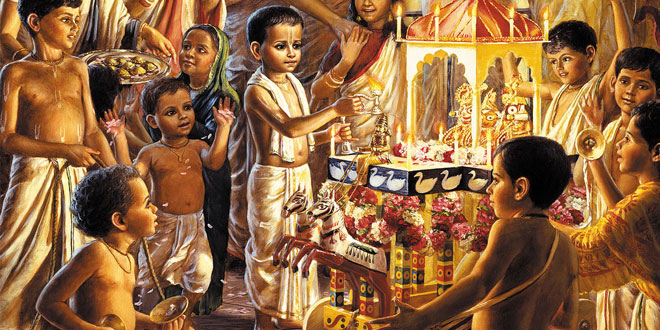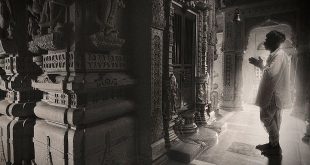How is Ram Navami Celebrated? Ram Navami is one of the holiest Hindu occasions that commemorate the birth of Lord Rama.
The occasion is important not only for Hindus but many members of other communities as well. Just a cursory glance at the hotspots of the Ram Navami observances can warm one’s heart at the sight of people of entirely white origins taking part in the celebrations with shaved heads and maroon clothing. Many liberal Muslims can also be found to observe the festival with extreme earnestness.
How is Ram Navami Celebrated?
Many Hindus observe a strict fast throughout the daytime on Ram Navami, an act that is believed to lead to the attainment of salvation, breaking it only after sunset. The fast is not compulsory and many people prefer to restrict themselves to a special diet instead, comprising of fruit, root vegetables and potatoes made in any form without haldi (turmeric), garlic, ginger or onion. One can also have tea, coffee, milk, curd and water.
Sacred rituals are performed all through the Ram Navami day and includes such traditions as Akhand Paath (a constant recital of verses from the famous poetic work Ramcharitmanas) that begins days before the actual festive day and ends on the day itself. Bhajans (religious songs) are sung before the idols of Lord Rama, his loyal brother Lakshman and his devoted wife Sita. These songs glorify the virtues of the threesome and also recapitulate their life and actions.
On the festive day, every temple and house is swept clean for the celebrations. Idols or pictures of Lord Rama, Lakshman, Sita and Hanuman are cleaned or bathed and put on a dais. Burning incense and two thaalis (metal plates for worship purposes) are kept before the deities. One plate traditionally contains roli, aipun, rice, water, flowers, a bell and a conch – items necessary for worship. The other contains the prasad, the offering of food to be made to the deities.
If is a home celebration, the youngest female member of the family is expected to apply a teeka (a red mark) on the foreheads of all the male members of the family, while a red bindi (dot) is applied on the foreheads of all the female members. Then the worship ceremony (puja) begins. Water, roli, and aipun are sprinkled on the gods. Fistful of rice grains are showered on the deities and a collective prayer is performed with the chanting of sacred verses usually done in the presence of a priest. This is followed by the arti (prayer service) that involves the participation of everyone in the family. Singing of bhajans is an essential tradition related to the puja (worship) and everyone together to participates The service comes to a finish with the priest sprinkling Ganga jal or plain water over all assembled members and praying for their peace. The worship ends with the distribution of prasad (food offering) among all present for the ceremony.
The temple celebrations are similar to the individual observances in homes and witness an early cleaning of the premises. In many temples, idols or images of baby Rama are placed on cradles and rocked by devotees. “Havan” or “yajna”s (special ritual ceremonies) are performed. Idols of Lord Rama, Sita and Lakshmana are also installed separately in the main chamber and offerings of fruits and flowers are made before them to the accompaniment of the chanting of sacred verses from the Vedas. In South India, Ram Navami is also celebrated as the wedding anniversary of Rama and his consort Sita. Thus ceremonial wedding ceremonies, Sitarama Kalyanam, of the celestial couple are held at temples throughout the region, with much fervor and the Lord’s name is chanted all the way through:
“Rama, Rama Nama Smaranam.”
Ayodhya (Uttar Pradesh), Bhadrachalam (Andhra Pradesh) and Rameswaram (Tamil Nadu) are the main places where one can witness the grandest observances of the occasion. Thousands of devotees and tourists from different nations throng these places during Ram Navami to get a feel of the religious excitement. This is the time when Rath Yatra (the chariot processions) are taken out at several places. Wooden or stone statues of Lord Rama, his wife Sita, brother Lakshmana and devotee Hanuman are taken out from temples, seated in brilliantly decorated chariots and taken around for some distance before re-installing them. Thousands of people take a dip in the sacred river Sarayu in Ayodhya with the hope of absolute purification and gaining a place in heaven. The annual Ram Navami celebrations are nothing but a testimony to the desire of man to gain a unison with the divine.
 Kids Portal For Parents India Kids Network
Kids Portal For Parents India Kids Network







